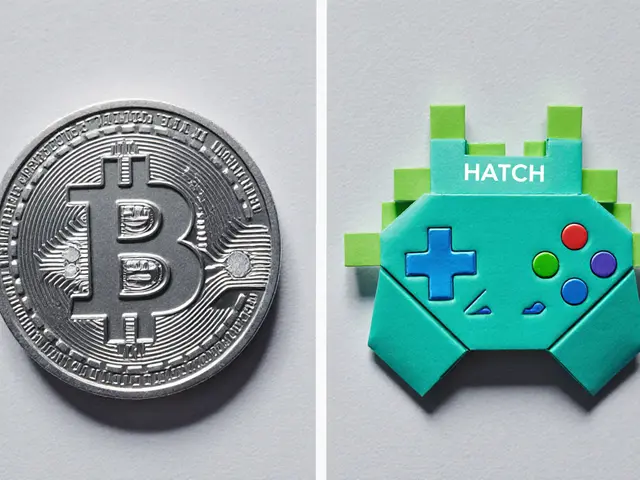Crypto Theft Impact Calculator
How does $3B compare to real-world spending?
The DPRK stole approximately $3 billion in cryptocurrency between 2017-2023. This calculator shows what this amount represents in terms of military budgets and social programs.
Enter a country and time period to see how $3 billion compares to their military spending or social programs.
North Korean cryptocurrency theft operations are state‑sponsored hacking campaigns that have siphoned roughly $3billion in digital assets between 2017 and 2023. North Korea crypto hackers use a blend of social engineering, custom malware, and cross‑chain laundering to fund the regime’s weapons programs while sidestepping international sanctions.
Why the $3billion figure matters
The United Nations Security Council flagged the $3billion number in a December2024 assessment, labeling the thefts as the largest state‑backed crypto heist series on record. That amount dwarfs the total criminal crypto loss of $2.2billion reported for 2024 alone, meaning North Korean actors accounted for more than half of global crypto crime that year.
Beyond raw numbers, the scale signals a shift: cyber‑crime is no longer a side‑business for rogue groups; it’s a core revenue stream for a nuclear‑armed state.
Who’s behind the attacks?
Security analysts track five main groups linked to the DPRK:
- Lazarus Group - the oldest and most prolific, responsible for the 2024 DMM breach.
- TraderTraitor - known for rapid asset flipping and the 2023 Atomic Wallet hack.
- Jade Sleet - focuses on small‑to‑medium exchanges.
- UNC4899 - specializes in supply‑chain infiltration.
- Slow Pisces - newer, but already linked to the massive 2025 Bybit theft.
Each group shares a common playbook: recruit victims on LinkedIn, drop malicious Python scripts via GitHub, hijack session cookies, then manipulate legitimate transaction requests.
Signature attacks you should know
| Group | Year | Target | Amount Stolen | Notable Tactics |
|---|---|---|---|---|
| Lazarus Group | 2024 | DMM (Japan) | $308million (4,502.9BTC) | LinkedIn recruitment → malicious Python script → session hijack → transaction spoof |
| TraderTraitor | 2023 | Atomic Wallet | $100million | phishing email → credential reuse → rapid conversion |
| Slow Pisces | 2025 | Bybit (Dubai) | $1.5billion (Ether) | cross‑chain bridge abuse → decentralized exchange swapping |
| Jade Sleet | 2022 | Various small exchanges | $45million | malware‑injected wallet agents |
| UNC4899 | 2021 | Supply‑chain software | $22million | software update compromise |
The table shows a clear pattern: attacks get bigger, and the tools get more sophisticated.

How the stolen coins disappear
After a breach, the hackers move funds through a maze of wallets, decentralized exchanges (DEXs), and cross‑chain bridges. Chainalysis and TRM Labs have mapped typical laundering steps:
- Convert the stolen crypto into Bitcoin or stablecoins within minutes.
- Split the output into dozens of wallets to dilute traceability.
- Use DEXs like Uniswap or PancakeSwap to swap across chains.
- Bridge the assets to privacy‑focused networks (e.g., Tornado Cash alternatives).
- End‑stage: funnel the cleaned coins into offshore accounts or fund procurement of missile components.
Because each hop erases part of the transaction history, investigators need sophisticated graph‑analysis tools to piece together the trail.
Impact on the crypto ecosystem
Losses from North Korean campaigns have forced exchanges and wallet providers to rethink security:
- Multi‑signature wallets are now mandatory for high‑value accounts.
- Employee training on social‑engineering attacks has become a compliance requirement.
- Real‑time blockchain monitoring services are bundled into most platform security stacks.
- Insurance premiums for crypto custodians have risen by 30‑40% since 2023.
Regulators also react. The U.S. Treasury’s Office of Foreign Assets Control (OFAC) has added several DPRK‑linked wallets to its sanctions list, and the European Union is drafting mandatory crypto‑transaction reporting rules.
What organizations can do today
If you run a crypto exchange, wallet service, or any business that handles digital assets, here’s a quick checklist to lower the risk of becoming the next headline:
- Verify employee identities with multi‑factor authentication (MFA) on all privileged accounts.
- Isolate wallet‑management systems from internet‑facing services.
- Conduct regular phishing simulations targeting your staff.
- Deploy endpoint detection and response (EDR) tools that can flag rogue Python scripts.
- Integrate blockchain analytics (e.g., Chainalysis) to flag inbound transfers from high‑risk wallets.
- Establish an incident‑response playbook that includes legal notification timelines.
Even small firms can adopt these steps without huge budgets-many open‑source EDR solutions and free blockchain monitoring APIs exist.
Looking ahead: will the thefts keep growing?
Experts agree the trend points upward. As sanctions tighten, the DPRK loses traditional revenue streams, pushing them to rely even more on crypto. Newer groups like Slow Pisces are already testing automated smart‑contract exploits that could automate the entire theft‑to‑launder pipeline.
In short, expect larger targets, faster conversion, and more clever obfuscation. Staying ahead means treating cyber‑security as a strategic priority, not just an IT checkbox.
Quick Takeaways
- North Korean hackers have stolen roughly $3billion in crypto since 2017.
- Five state‑linked groups (Lazarus, TraderTraitor, Jade Sleet, UNC4899, Slow Pisces) drive the campaign.
- Social engineering via LinkedIn and malicious Python scripts are the most common entry points.
- Funds are laundered through rapid cross‑chain swaps, DEXs, and privacy bridges.
- Crypto firms can reduce risk with MFA, employee training, wallet isolation, and blockchain analytics.
Frequently Asked Questions
How does the $3billion theft figure compare to global crypto crime?
The $3billion stolen by North Korean actors represents about 60% of all crypto‑related thefts reported for 2024, even though they accounted for only 20% of the incidents. This disproportion shows how sophisticated the DPRK’s operations are compared to typical cyber‑crime groups.
Which exchange suffered the biggest single loss?
Bybit’s February2025 breach, attributed to the Slow Pisces group, resulted in the theft of nearly $1.5billion worth of Ether - the largest single cryptocurrency heist ever recorded.
Can ordinary investors protect themselves from these attacks?
Individual investors are less likely to be direct targets, but they should still use hardware wallets, enable MFA on every exchange account, and avoid clicking unsolicited links-even if they appear on professional networks like LinkedIn.
What role do blockchain analysis firms play?
Companies such as Chainalysis and TRM Labs trace transaction flows, flag high‑risk wallets, and provide attribution reports that help law‑enforcement agencies connect stolen funds back to DPRK‑linked addresses.
Will sanctions stop North Korea’s crypto funding?
Sanctions raise the cost of moving crypto but haven’t stopped the thefts. The DPRK adapts by using more privacy‑focused tools and targeting larger platforms to generate bigger payouts.





Marques Validus
North Korean crypto ops basically represent a full‑scale financial warfront they leverage sophisticated phishing vectors and custom Python malware to siphon assets across multiple blockchains
Millsaps Crista
Yo, great breakdown – the real kicker is how quickly they move the loot.
Every exchange should treat MFA like a gate‑keeper, not an afterthought.
And those cross‑chain bridges? They’re the new black market tunnels.
Implement real‑time monitoring and train staff on LinkedIn lures – it’s non‑negotiable.
Stay ahead or you’ll be the next headline.
Matthew Homewood
The narrative of North Korean cyber‑funding forces us to confront the philosophical underpinnings of state‑sponsored crime.
When a regime weaponizes code, the line between espionage and theft blurs into a single, relentless pursuit of survival.
This is not a mere opportunistic heist; it is an existential strategy built on digital alchemy.
Each stolen Bitcoin becomes a brick in a missile silo, a testament to how value is redefined in the modern age.
Such actions compel us to ask whether the international community’s sanctions regime is merely a symbolic gesture.
In practice, the regime adapts, turning punitive measures into fuel for further innovation.
The repeated use of LinkedIn recruitment reveals a deeper sociotechnical vulnerability: trust masquerading as professional networking.
When a user clicks a seemingly innocuous script, they unwittingly become a conduit for state revenue.
Moreover, the escalation from simple phishing to automated smart‑contract exploits signals an industrialization of theft.
The pattern of increasing haul size mirrors economies of scale, suggesting these groups operate like clandestine multinational corporations.
As the attacks grow, the tools evolve, embracing privacy‑preserving bridges that obfuscate trails beyond conventional forensics.
Chainalysis and TRM Labs are forced into a perpetual arms race, their algorithms always a step behind the attackers’ permutations.
Regulators, in response, draft ever‑tighter reporting mandates, yet the underlying incentive structure remains untouched.
The real solution may lie not in more rules but in reshaping the economic calculus that drives these actors.
By cutting off the financial lifelines, perhaps the regime’s appetite for cyber‑raiding will diminish, but that is a monumental diplomatic challenge.
Until then, the crypto ecosystem must internalize resilience as a core tenet, not an afterthought.
Shane Lunan
Cold hard truth: most of these hacks are avoidable if you stop handing out admin rights like candy.
Brian Elliot
From an inclusive standpoint, it’s vital that every crypto platform adopts a baseline of security hygiene.
Multi‑signature wallets, routine phishing drills, and strict privilege segregation create a collective shield.
Even smaller exchanges can leverage open‑source EDR tools without breaking the bank.
The community benefits when the low‑hanging fruit is stripped away from threat actors.
Teagan Beck
Agree. Keep it simple, keep it safe.
Isabelle Graf
North Korea stealing crypto is just modern piracy.